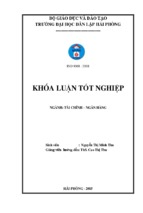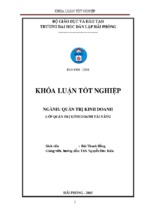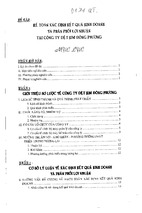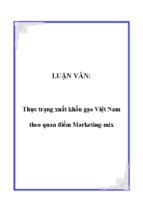Business and Privacy…page 33 The War Against Piracy…page 72
www.hbr.org
December 2004
60 The HBR Interview:
Leading Change When Business Is Good
Samuel J. Palmisano
72 How Market Smarts Can Protect
Property Rights
Bharat Anand and Alexander Galetovic
82 Beyond Offshoring: Assess Your Company’s
Global Potential
Diana Farrell
92 How to Grow Great Leaders
Douglas A. Ready
104 The 21st-Century Supply Chain
[Part 3 of 3 ]
HBR
Spotlight
104 Building Deep Supplier Relationships
Jeffrey K. Liker and Thomas Y. Choi
114 We’re in This Together
Douglas M. Lambert and A. Michael Knemeyer
16 Forethought
Feeding
the Fire
…page 60
33 HBR Case Study
None of Our Business?
Roberta A. Fusaro
47 Big Picture
Best Face Forward
Jeffrey F. Rayport and Bernard J. Jaworski
125 Best Practice
The Path to Corporate Responsibility
Simon Zadek
134 Tool Kit
Making Real Options Really Work
Alexander B. van Putten and Ian C. MacMillan
146 Executive Summaries
152 Panel Discussion
TLFeBOOK
TLFeBOOK
TLFeBOOK
HBR
92
Features
104
December 2004
60 The HBR Interview: Samuel J. Palmisano
Leading Change When Business Is Good
60
Interviewed by Paul Hemp
and Thomas A. Stewart
Would you ask your employees to determine the core
values that define your company and guide their decisions every day? Would you listen to them if you did?
IBM’s CEO maintains that’s the only way to manage
a big, broad company.
72 How Market Smarts Can Protect
Property Rights
Bharat Anand and Alexander Galetovic
Intellectual property comprises an ever-increasing fraction of corporate wealth, but what’s the good of that if
an ever-increasing fraction of the property is copied or
stolen? Six market-based strategies can help companies
protect their innovations.
82 Beyond Offshoring: Assess Your Company’s
Global Potential
HBR
Spotlight
The
21st-Century Supply Chain
[ Part 3 of 3 ]
104 Building Deep Supplier Relationships
Jeffrey K. Liker and Thomas Y. Choi
When it comes to building strong relationships with
North American suppliers, automakers Toyota and
Honda have the Big Three beat hands down. So how
do they do it? Six steps are the key.
Diana Farrell
There’s no question that globalization will save your
company costs. But what about using it to generate
new revenues as well? Here’s how.
114 We’re in This Together
92 How to Grow Great Leaders
Douglas M. Lambert and A. Michael Knemeyer
Douglas A. Ready
More than ever, companies must synchronize units’ actions
with broader enterprise goals. The challenge is to develop
leaders who can manage the inherent tensions between
the two – and that may require a strategic overhaul.
Even when a full-blown partnership with a supplier
seems impeccably justified, it can fail if the partners harbor mismatched expectations. A focused day-and-a-half
session of frank talk can ensure the relationship’s longterm success.
82
COVER ART: STEPHEN SWINTEK
continued on page 6
72
4
TLFeBOOK
harvard business review
TLFeBOOK
HBR
D e pa r t m e n t s
December 2004
8
FROM THE EDITOR
102
S T R AT E G I C H U M O R
125
BEST PRACTICE
Burning to Be Great
When it comes to managing change,
the consensus is that most people won’t
jump until they feel the flames of disaster licking their ankles. So what do you
do if business is pretty good?
16
8
The Path to Corporate
Responsibility
Simon Zadek
FORETHOUGHT
Investors’ herd instinct…Are business
school curricula falling short on ethics
and leadership?…Like open source,
open corporate suggestion boxes…Why
employee engagement is so important…
Information law as the new competitive
playing field…Citizenship means different things to different companies…Who’s
winning in women’s international sports
and the implications for business…The
consequences of not adjusting cost-ofcapital calculations to reflect pension
risks…Tips for competing against WalMart…Insurance programs for independent workers…Marketing your expertise, not just your products…How to
become more politically savvy.
33
Intense pressure from activists in the
1990s forced Nike to take a long, hard
look at the way it was doing business.
Here’s how the company transformed
itself from the poster child for corporate
irresponsibility to a progressive leader
that cultivates and champions ethical
business practices.
16
134
Making Real Options
Really Work
Alexander B. van Putten
and Ian C. MacMillan
Discounted cash flow analysis is a great
way to protect yourself from the downside of a risky growth opportunity, but
it doesn’t do justice to the potential
gains. Real options can capture that upside yet can underplay the risks. Rather
than apply one method or the other, it’s
far better to combine the two. There’s
a simple way to do it.
47
HBR CASE STUDY
None of Our Business?
Roberta A. Fusaro
KK Incorporated, a teen clothing manufacturer and retailer, approaches Raydar
Electronics about integrating tracking
technology into its products. Raydar’s
CEO is intrigued by KK’s plan but troubled by the Big Brother implications
for customers’ privacy.
47
143
LETTERS TO THE EDITOR
Transferring wisdom is a huge issue for
preserving human capital. But often the
incumbent gurus are not willing to share
what they know – because by keeping it
to themselves, they maintain some degree of job security.
125
BIG PICTURE
Best Face Forward
146
EXECUTIVE SUMMARIES
Jeffrey F. Rayport and
Bernard J. Jaworski
152
PA N E L D I S C U S S I O N
First Among Unequals
Optimizing your customer interface
requires the right mix of people and
machines on the front lines – and a
sometimes surprising division of
labor between them.
6
TOOL KIT
Don Moyer
134
TLFeBOOK
Far more people consider themselves
above average in intelligence and skills
than the definition of “average” allows.
harvard business review
TLFeBOOK
FROM THE EDITOR
Burning to Be Great
anaging change is leadership’s greatest challenge. Nothing is more perilous or uncertain,
Machiavelli wrote. Nothing is harder,
Jefferson implied when he noted that
mankind is disposed to suffer for a
long time before rising up against the
causes of suffering. Within modern
management literature, there is consensus that leaders need a “burning
platform” to overcome resistance to
change. People will not jump until
they feel flames licking their ankles.
Managers even tell an Aesop-like little fable about this: the
one about the frogs on the stove. The frog in the pot of cool
water is boiled alive because he senses no peril as the temperature rises slowly, while the other frog, dropped into
seething water, leaps to safety. That is biologically false; both
frogs will probably die. (The simmered frog will be tastier
and more tender.) But the story rings true.
So what do you do if business is pretty good? How do
you maintain energy for change when the water feels fine?
Sam Palmisano faced this challenge when he became CEO
of IBM in 2002. Under the hard-driving leadership of Lou
Gerstner, IBM had survived a near-death experience and
was outperforming most of its competitors. It would be natural for employees to want a breather – and also suicidal.
Palmisano put it this way: “People say, ‘The leadership may
be different, but the strategy is fundamentally sound. Why
do I have to change?’ This is a challenge everyone running
a successful company wrestles with.”
Palmisano was talking to me and HBR senior editor Paul
Hemp at IBM’s headquarters as we conducted the interview in this month’s issue. What you’ll read here is surprising and, I think, important on two levels. First, it is the story
of a leader who created a case for change not by pointing to
a crisis but by stoking the fires of ambition-to-be-great that
burn in employees. Prodded by Palmisano in a companywide intranet conversation, tens of thousands of IBMers
poured out nearly one million words calling upon the company to become more than it is. This was an extraordinary
mandate for change.
It is also the story of IBM’s search for a way to manage
itself without heavy-handed supervision. Palmisano cites
8
an old business saw: “People don’t do
what you expect; they do what you inspect.” That served IBM well enough
when it was a simpler organization
where most employees had unambiguous jobs and worked a few feet away
from their bosses. With knowledgeintensive jobs that require independent decision making and two-fifths of
employees reporting for work at nonIBM locations, IBM needed an operating system that performs when managers aren’t around. Palmisano believes
he has found one in values – not a banal list of aspirations
on glossy posters, but meaningful statements arrived at
after a rigorous process meant to become, truly, a management system.
While others have written ably about IBM’s revitalization
and strategy under Gerstner and now Palmisano, the CEO
believes that this is the most fundamental work he is doing.
It is, as you will see, unlike anything you’ve ever read about
corporate values.
This month’s HBR comes with a bonus, our first-ever
Reader’s Guide. In the past, we have devoted about ten
pages of the year’s last issue to an index of the year’s articles. This time we go one better. The 2004 Reader’s Guide
is a separate publication that includes the index plus executive summaries of every article published this year. (December’s executive summaries are also in their usual place
in this issue.) Many of you, we know, rely on executive
summaries to plan your time with HBR. The guide makes
it easier for you to use your library of back issues and to
order reprints. Subscribers can also use the Reader’s Guide
in conjunction with HBR Online. Once you register, at
www.hbr.org, you can get the Reader’s Guide in electronic
form. You can also call up the previous 12 months’ worth of
articles for no cost.
ROBERT MEGANCK
M
Thomas A. Stewart
TLFeBOOK
harvard business review
TLFeBOOK
editor
Thomas A. Stewart
deputy editor
Karen Dillon
executive editor
Sarah Cliffe
art director
Karen Player
senior editors
Leigh Buchanan
David Champion
Diane L. Coutu
Bronwyn Fryer
Ben Gerson
Paul Hemp
Julia Kirby
Gardiner Morse
Ellen Peebles
Anand P. Raman
associate
editor
Eileen Roche
consulting
editor
Louise O’Brien
manuscript
editors
Christina Bortz
Lisa Burrell
Roberta A. Fusaro
Margaret K. Hanshaw
Andrew O’Connell
Andrea Ovans
editor for
business
development
John T. Landry
executive editor
and director
of derivative
products
Jane Heifetz
A SPECIAL ADVERTISING SECTION
COMING IN MARCH 2005
MBA/Executive
Education Directory
Graduate business education has become more
and more of a necessity for those who want to
advance their careers. Whether you are considering
education for yourself or your employees, the
2005 Harvard Business Review MBA/Executive
Education Directory will be a valuable tool for
identifying and contacting the right institutions.
It’s also an excellent opportunity for providers
of business education to reach a targeted and
motivated audience.
SPACE CLOSES JANUARY 20, 2005
To advertise, callTLFeBOOK
(212) 872-9280
senior
production
manager
Dana Lissy
associate
production
manager
Christine Wilder
senior designers
Kaajal S. Asher
Jill Manca
Annette Trivette
production
coordinator
Josette AkreshGonzales
communications
manager
Cathy Olofson
editorial
coordinator
Kassandra Duane
editorial
assistant
Siobhan C. Ford
contributing
staff
Amy L. Halliday
Amy N. Monaghan
Annie Noonan
Kristin Murphy
Romano
editor-at-large
harvard business school publishing
Walter Kiechel
a note to readers
The views expressed in articles are
the authors’ and not necessarily those of
Harvard Business Review, Harvard Business
School, or Harvard University. Authors may
have consulting or other business relationships
with the companies they discuss.
submissions
We encourage prospective authors
to follow HBR’s “Guidelines for Authors”
before submitting manuscripts. To obtain a
copy, please go to our Web site at www.hbr.org;
write to The Editor, Harvard Business Review,
60 Harvard Way, Boston, MA 02163; or send
e-mail to
[email protected].
Unsolicited manuscripts will be returned
only if accompanied by a self-addressed
stamped envelope.
editorial offices
60 Harvard Way, Boston, MA 02163
617-783-7410; fax: 617-783-7493
www.harvardbusinessonline.org
Volume 82, Number 12
December 2004
Printed in the U.S.A.
TLFeBOOK
publisher
Cathryn Cronin Cranston
manager,
marketing and
operations
Marisa Maurer
business
director
Edward D. Crowley
direct marketing
manager
Bruce W. Rhodes
advertising
production
manager
Catharine-Mary
Donovan
assistant
subscriber
services manager
Elizabeth Sottile
senior business
analyst
Adrienne M. Spelker
assistant
advertising
manager
Ashley C. Hartmann
worldwide advertising offices
advertising director – worldwide
Trish Henry
212-872-9283
New York Maria A. Beacom
Michael J. Carroll
James H. Patten
509 Madison Avenue
15th Floor
New York, NY 10022
212-872-9280;
fax: 212-838-9659
Atlanta
Boston
Chicago
Dallas
Detroit
Los Angeles
San Francisco
Brazil
France
Latin America
Mexico
Sweden
United Kingdom
404-256-3800
978-287-5400
312-575-1100
214-521-6116
248-524-9000
323-467-5906
415-986-7762
5511-3285-2754
33-01-4643-0066
562-738-4033
5255-5081-6838
48-8-541-318-37
44-20-7586-2224
For all other inquiries,
please call 212-872-9280.
For advertising contact information,
please visit our Web site at
www.hbradsales.com.
subscription service information
u.s. and canada
800-274-3214; fax: 902-563-4807
Rates per year: U.S., $118; Canada, u.s $128
international
44-1858-438868; fax: 44-1858-468969
Rates per year: u.s.$165; Mexico, u.s.$128
subscribe online
www.hbr.org
reproduction
Copyright © 2004 Harvard Business School
Publishing Corporation. All rights reserved.
No part of this publication may be reproduced
or transmitted in any form or by any means,
electronic or mechanical, including photocopy,
recording, or any information storage and
retrieval system, without written permission.
TLFeBOOK
TLFeBOOK
T H E N E W C A D I L L A C ST S
STS V8: With available performance-tuned all-wheel drive, engine power turns a corner.
TLFeBOOK
While elementary, the notion that
FOUR IS GREATER THAN TWO
has led to a better performing vehicle.
The appeal of having a 320-hp 4.6L Northstar V8
four wheels will seldom find exactly the same
VVT driving all four wheels would seem obvious
degree of traction, thus opening the door to wheel
enough. It is generally acknowledged that all-wheel
spin and the subsequent loss of power and control.
drive translates into all-weather, all-road capability.
We close that door with the STS chassis control
But the new Cadillac STS is, first
system, which integrates the
and foremost, a performance vehicle,
control strategies of the engine,
and performance drivers are attached
transmission, ABS, traction
to the more traditional rear-wheel-
control, and the StabiliTrak
drive configuration, for reasons more
stability enhancement system
compelling than nostalgia. Having
to minimize wheel slip and to
the front wheels steer while the rear
help keep STS moving in the
wheels generate forward thrust
direction the driver intends.
produces perhaps the most thrilling
aspect of performance driving — accelerating out of
a corner, using the throttle to shape your exit line.
How might one craft an all-wheel-drive system that
would satisfy the performance driver?
But what the performance
driver will note is that engineers
have given the AWD system in STS
a 40/60 front-to-rear torque split,
meaning that 60 percent of engine
Available on STS V8, the Cadillac performance-tuned
output is directed toward the rear
AWD system makes extensive use of aluminum
wheels. Just enough, it turns out, to
to enhance vehicle capability without adding
make STS with AWD feel more rear-wheel-drive-
excessive weight. Care was taken in
the design, selection, and mounting
of components to minimize noise
and vibration, thus preserving a
premium ride experience. It is in every way
an elegant system, but its primary focus
is the delivery of power — to all four wheels.
like when power is applied in corners.
Toe the throttle coming out of a corner, and
everything — lightweight components, sophisticated
controls, and 60 percent of driving force directed
to the rear wheels — comes seamlessly into play.
Being “on rails” is far too passive a metaphor.
You might well call the experience thrilling. For
But during cornering, particularly
performance, four is greater than two. Cadillac
during aggressive cornering, all
STS V6 starting at $40,995.*
cadillac.com *MSRP. STS V8 as shown $62,510 MSRP. Tax, title, license, dealer fees and other optional equipment extra.
©2004 GM Corp. All rights reserved. Break ThroughTM Cadillac® Cadillac badge® Northstar® STS® StabiliTrak®
TLFeBOOK
A survey of ideas, trends, people, and practices on the business horizon.
Ian Ayres (
[email protected]) is the
William K. Townsend Professor of
Law at Yale Law School.
Larry Downes (
[email protected])
teaches law and strategy at the University of California, Berkeley.
Francesca Golfetto (francesca.golfetto@
uni-bocconi.it) is a professor of marketing at Bocconi University in Milan.
Bradley Googins (
[email protected]) is
a professor of organization studies at
Boston College and the director of
BC’s Center for Corporate Citizenship.
Dan Haas (
[email protected])
is a partner in Bain & Company’s
Retail practice.
Robert D. Hormats (rdhormats@am
.ibd.gs.com) is a vice chairman of
Goldman Sachs (International).
Michael W. Klein (michael.klein@tufts
.edu) is a professor of international
economics at Tufts’ Fletcher School.
David Mazursky (
[email protected])
is professor of business administration at Hebrew University.
Robert C. Merton (
[email protected])
Philip Mirvis (
[email protected]) is an
organizational psychologist and senior fellow at Boston College’s Center
for Corporate Citizenship.
Barry Nalebuff (barry.nalebuff@yale
.edu) is the Milton Steinbach Professor
of Management at Yale School of
Management.
Peter Navarro (
[email protected]) is
an associate professor of economics
and public policy at the Graduate
School of Management, University
of California, Irvine.
Darrell K. Rigby (darrell.rigby@bain
.com) directs Bain & Company’s
Global Retail practice.
16
g r i st
Born to Herd
by robert d. hormats
One evening around 40,000 years ago,
on the steppes of Central Asia, a small
group of our distant forefathers prepared
to hunt down a woolly mammoth. There
was, of course, enormous risk in pursuing such a large beast. But these hunters
belonged to a band of about 40 men,
women, and children who had endured
a hard winter. A single mammoth could
feed them all for many weeks, so the
prize seemed well worth the risk.
The men spent that evening sharpening their spears and building up their
courage; the next day, they recited incan-
TLFeBOOK
tations passed down from their ancestors and dabbed their faces with colorful
paint. The knowledge that a few might
be sacrificed on the tusks of the mammoth was largely forgotten in the excitement of preparation and the anticipation
of reward.
Surprisingly, that scene from the mists
of time tells us quite a bit about investor
behavior today. Many human social and
emotional drives emerged over millions
of years of evolution. Our species’ earliest
survival instincts, inherited from prehuman ancestors, drove them to hunt in
harvard business review
CHRIS SHARP
is the John and Natty McArthur University Professor at Harvard Business
School and winner of the 1997 Nobel
Prize in Economic Science.
packs – especially when they preyed on
much bigger species – and to aggressively defend their band. Strong herd
emotions helped prehistoric peoples
summon the will and courage to take
risks, to join such hunting parties, and
to collectively protect their families and
villages. To act individually would have
been exceedingly irrational. To act as
a group was vital to survival and thus
highly rational. Each and every one of
us is descended from those who took
such joint risks and survived.
Modern cultures still incorporate
some of these behavior patterns. The
same herd instinct – those strong and
emotional group impulses, the collective
exuberance and excitement of the hunt
or of battles against marauding predators or rival groups – has been passed
to us. It often manifests itself in our investment decisions. And while at times
investor herd behavior has been highly
destructive, it has also produced many
of capitalism’s great achievements.
Participants in economic bubbles
join the crowd, even though, in the final
analysis, individual losers often vastly
outnumber individual winners. But just
as the herd instinct allowed the prehistoric hunting party to accomplish something significant for the group – something that no individual could do on his
own – so it has occasionally hastened
major developments that benefit whole
economies. The railway booms of the
nineteenth century revolutionized transportation in America and Western Europe and helped to open the American
West. The Internet frenzy created a revolutionary aid to communication and
commerce.
Yes, such booms and busts often cause
economic instability and massive investment losses, with no commensurate benefit for many. And yes, in recent years,
they have spawned some outrageous
betrayals of investor trust. But by fueling investments in high-risk, high-return
ventures, they also have produced broad
december 2004
benefits for society that might not otherwise have occurred, or at least not as
quickly.
This is a twist on the traditional view of
economists, who typically define the individual’s behavior as irrational in the context of group behavior. In Manias, Panics,
and Crashes: A History of Financial Crises,
economist Charles P. Kindleberger noted
that “mob psychology or hysteria is well
established as an occasional deviation
from rational behavior”; in such situations,“the action of each individual is
rational – or would be – were it not for the
fact that others are behaving in the same
way.” The economist Robert Shiller, in Irrational Exuberance, argued that herdlike
behavior,“although individually rational,
produces group behavior that is, in a welldefined sense, irrational.” In neither view
does it make much sense for individual
investors to enthusiastically join the “irrational” pack. And yet investors frequently
do, and they have done so repeatedly over
the centuries. Something more instinctual
than economic logic must be at play.
John Maynard Keynes recognized the
primal origins of these “irrational” economic forces.“Our decisions to do something positive,” he wrote in The General
m a n a g e m e n t e d u cati o n
Why Johnny Can’t Lead
by peter navarro
With the savings and loan crisis of the 1980s and the much more recent corporate scandals at MBA-laden companies, business schools have been scratching
their heads about how, exactly, to fortify their ethics curricula. And with the
information technology revolution radically revamping management practices,
the top-ranked schools have likewise struggled with whether to require IT in the
core. Then there’s the question of how to strike a better balance between the
traditional number-crunching management science courses like accounting,
finance, and operations management and the often-neglected soft skills like
leadership and negotiations, which can make or break executives in the
real world.
So, how well are business schools doing in reconfiguring their curricula? In
a survey of the core curricula of the top 50 U.S. business schools, my colleague
Darlene Carver and I found that only 40% require an ethics or social responsibility course while only 50% require IT. Moreover, less than a third require soft-skill
courses like human resource management, leadership, negotiations, and entrepreneurship while only a little over half require organizational behavior or
management communications.
One likely culprit for this slow progress is the antiquated organizational
architecture of the typical business school. As Nobel economist Herbert Simon
warned almost 50 years ago, there is a natural tendency for business schools
to organize around functional silos such as accounting, finance, or marketing.
These silos then engage in a perennial contest to build coalitions and protect
turf. The result appears to be, at many schools, an unbalanced core curriculum
that doesn’t fully meet corporate or social needs.
Reprint F0412B
TLFeBOOK
17
Theory of Employment, Interest, and Money,
“…can only be taken as the result of animal spirits – a spontaneous urge to action
rather than inaction, and not as the outcome of a weighted average of quantitative benefits multiplied by quantitative
probabilities.” These “animal spirits” developed over millions of years of evolution. They gave early man the courage
to migrate out of a small patch in East
Africa to populate unknown lands and
the cohesion to survive enormous adversity – several Ice Ages, massive droughts,
predatory beasts, and hostile neighbors.
Today, the residual, instinctual legacy of
these prehistoric peoples drives herdlike,
“irrationally exuberant” investment decisions that, while often harming individual investors, may collectively benefit society. As descendants of those successful
mammoth hunters, we do what over
eons we have become hardwired to do.
Reprint F0412A
i n n o vati o n
Encouraging
Suggestive Behavior
by barry nalebuff and ian ayres
The company suggestion box poses a becareful-what-you-wish-for dilemma. You
want lots of ideas, but what happens when
you get them? Responding to each suggestion is costly, especially if someone has
to identify the right person to evaluate it.
If one idea in ten is worth pursuing, that’s
a great outcome for management but a
demoralizing one for the large majority
of employees whose brainchildren are
rejected. And because employees don’t
know why their ideas failed, they don’t
learn how to come up with better ones.
Instead of funneling suggestions to
designated experts, why not borrow a
page from the open source movement
and turn your workforce into critics and
codevelopers of their peers’ ideas? Several universities, as well as companies
such as Telcordia and Biosense Webster,
have built “open” suggestion boxes on
their networks and invited their whole
organizations to weigh in. Staff evaluate,
comment on, and improve their peers’
18
submissions. Employee rankings then
filter those ideas to help management
focus on the most promising. Rejection
is more palatable when served with a reason: Employees who see colleagues’ feedback will know their ideas were taken seriously, even if the ideas failed to ignite.
An open suggestion box requires the
enthusiastic participation of innovators
and constructive critics; fortunately,
their incentive is baked into the model.
As with open source development, these
boxes – which are like a communityinnovation blog – attract the kinds of
people who enjoy solving problems and
sharing their solutions. Participants earn
a reputation for brilliant ideas, for insightful commentary, for taking an idea
that merely hums and making it sing.
Then there’s the shot of egoboo (that’s
hacker lingo for “ego boost”) that occurs
when an idea is implemented and its
inventor gets the credit.
Not every idea belongs out in the
open, and so corporate suggestion boxes
are naturally restricted to employees. Interested organizations can find models
on the Web. Whynot.net, for example, is
a public site we developed that is based
on the same software that some companies use internally, and gives the flavor of
how discussion improves ideas. Take the
simple notion that brake lights should
shine brighter when the driver slams
down his foot. The Whynot community
has suggested scores of improvements.
TLFeBOOK
Should the brake lights change color?
Should they flash? Should there be a
rear-facing horn as well?
More inspiration can be found at
Halfbakery.com, which specializes in
slightly off-kilter ideas, such as presliced cream cheese patties with a precut hole to put on bagels. There’s also
Thinkcycle.org, Premisespremises.com,
Shouldexist.org, Globalideasbank.org,
and Creativitypool.com.
Corporations’ own open idea boxes have
produced such improvements as expense
reimbursements being added to payroll
deposits; a central reservation system for
meeting rooms; and HR-sponsored classes
in reading and understanding monthly
financial reports.
There is no one-size-fits-all suggestion box, and companies can customize
their own categories, with employees’
help. For example, Yale University’s internal idea site invites users to point out
dumb stuff it does under the heading
“Broken Processes.” (Management responds either by fixing the process or by
explaining – to everyone at once – why
the process isn’t so dumb after all.) The
heading “Unsolved Problems” identifies
questions that would be valuable to
solve. Two headings should appear in
every open idea box: “We’ve Done It”
and “We’re Doing It.” That’s how management demonstrates it has created an
incubator, not another black hole.
Reprint F0412C
harvard business review
h u m a n r e s o u rc e s
The Things They Do
for Love
Ask your employees to define work. If
they say,“It’s what I do for money,” you
could be in trouble.
Company leaders won’t be surprised
that employee engagement – the extent
to which workers commit to something
or someone in their organizations –
influences performance and retention.
But they may be surprised by how much
engagement matters. Increased commitment can
lead to a 57% improvement
in discretionary effort – that
is, employees’ willingness
to exceed duty’s call. That greater effort
produces, on average, a 20% individual
performance improvement and an
87% reduction in the desire to pull up
stakes, according to the Corporate Leadership Council, which surveyed more than
50,000 employees in more than 59 organizations worldwide. (The CLC – www
.corporateleadershipcouncil.com–is a division of the Corporate Executive Board, an
executive network for leaders of the world’s
largest public and private organizations.)
The CLC divides engagement into two
flavors. Rational commitment results when
a job serves employees’ financial, developmental, or professional self-interest.
Emotional commitment, which has four
times the power to affect performance
as its more pragmatic
counterpart, arises
when workers value,
enjoy, and believe in
what they do. About 11%
of the workforce, called
“true believers” by the CLC, demonstrate
very high degrees of both commitment
types; another 13% demonstrate depressingly little. Workers on the bad end of the
bell curve are four times more likely to
leave the organization than average employees, says the report, which dubs this
group “the disaffected.” The remaining 76%
are moderates, who generally exhibit a
strong commitment to one person or element of their jobs but can take or leave
december 2004
by larry
downes
First, Empower All the Lawyers
Your company’s legal department is broken. At best, it is an expensive bit of overhead, an evil made necessary by our litigious society. At worst, it is your biggest
roadblock to innovation. In most organizations, the legal staff is isolated and paid
too much just to say no to the most interesting ideas and strategies.
But in a global marketplace fueled by information, law and regulation increasingly determine winners and losers. That means company leaders must work more
closely with their legal departments. And they must hire lawyers who know how
to use law as a strategic weapon.
Intellectual property, licensing, antitrust, trade, securities, privacy, and employment – these are some of the new laws of the competitive jungle. Today, you cannot innovate without understanding patent, copyright, and trade-secret law. You
cannot outsource without knowing the employment laws of other countries.
You cannot convert to a Web-centric IT architecture without reading the fine
print of shrink-wrap licenses and the default rules provided by the Uniform Commercial Code, NAFTA, GATT, and others.
And you cannot mine value out of your data warehouse and use it to collaborate with internal and external stakeholders without an appreciation for the
increasingly complex regulations regarding data rights. European privacy law,
for example, recently defeated General Motors’ effort to produce a directory of
employees’ office telephone numbers. Today, governments are debating and passing sweeping legislation that will dictate how your company can use a wealth of
new transaction data that tomorrow’s technology will make available.
Yet many corporate lawyers are ill equipped to pursue their employers’ interests
in this new world. With rare exceptions, counsels know little about their companies’ business. Most lack a basic education in information law. They see their jobs
as telling other senior executives what cannot be done, what should not be done,
or what to avoid doing just to be safe. That role was probably inappropriate in
the last century. Today it can only lead to disasters that will flow straight to the
bottom line.
We need a new breed of corporate lawyers – including house counsels, lobbyists,
and outside attorneys – with both the expertise in emerging regulatory regimes
and the management skills to use that expertise. We need lawyers who use the law
offensively rather than just defensively. The new corporate counsels must act as
coach, adviser, and strategist, embracing their companies’ most innovative plans.
Law is the last great untapped source of competitive advantage. To extract it, the
culture of business, not to mention the cultures of law schools and business
schools, will have to evolve mighty fast.
At your company, start with education. Send your corporate counsel to management boot camp. Bring the legal department up to speed on your industry and
business. Give yourself a crash course in business law, and start hiring managers
from MBA programs that make such courses a core requirement. Show your lobbyists where your strategy intersects with new legal and regulatory priorities.
Fifteen years ago, another member of the executive team stood in comparable
disregard, his value a matter of doubt. That person was the CIO. We all know how
that turned out.
TLFeBOOK
Reprint F0412E
19
the rest. This group neither shirks nor
strives; its intent to leave is variable.
Obviously, employers want to shift as
many moderates as possible into the
true-believer column. But first, companies must identify them, and that’s not
easy. Observable performance factors are
of little use in predicting an employee’s
engagement level, the CLC found. Nor
are demographics a good clue: Employees of three years are as likely to be committed as employees of ten years; salespeople as likely as administrators; parents
as likely as nonparents; people in their
twenties as likely as people in their fifties.
But if employee types tell you nothing,
employers speak volumes. The differences
among individual companies is enormous, with the percentage of committed,
all-out-effort employees at the highestscoring organizations nine times that of
the lowest. And what distinguishes these
high-engagement companies may not be
what you think. According to CLC managing director Jean Martin,“Some organizations are enjoying up to 20% higher
levels of employee performance not because they pay more or provide better
benefits but because they let each employee know how important they are
to the success of the business, give them
lots of opportunities to contribute, and
help them believe in the worth and credibility of the organization. Employee engagement is not only crucial to building
a high-performing workforce, it is also an
essential defense against attrition for all
companies worried about tightening
– Leigh Buchanan
labor markets.”
Reprint F0412D
social responsibility
The Best of the Good
by philip mirvis and bradley googins
One way to distinguish companies that
talk about social responsibility from
those that live it is to observe what employees do about it. You would expect
a pharmaceutical maker such as Novo
Nordisk to have a charter full of noble visions and values – which it does. But the
company also requires all employees to
spend at least one day a year with some-
20
Management Lessons from Women’s Soccer
by michael w. klein
Fa c t: Countries that provide greater economic opportunities to women
are more successful in women’s international sports competitions.
The exhibit below shows the link between a country’s performance in the 1999 Women’s Soccer
World Cup and the labor force participation rate of its women relative to its men, controlling for
other factors that also affect success in an international sports competition.The upward-sloping
line shows that, among the 15 countries that qualified for the finals of the 1999 Women’s Soccer
World Cup, those in which women were afforded more economic opportunities were ones
whose women were more successful on the soccer pitch.This relationship is statistically
significant, and a similarly significant relationship is also found when considering the wider
set of countries that attempted to qualify for the Women’s Soccer World Cup that year, as well
as when looking at the performance of women in the 2000 Sydney Summer Olympics.
25
Norway
China
Canada
World 20
Cup
points
in 1999 15
Germany
Denmark
Russian Federation
Italy
Japan
Predicted correlation between
World Cup points earned and
labor force participation rate
Brazil
10
Sweden
Australia
United States
Nigeria
Ghana
Mexico
.5
.6
.7
.8
.9
1
Relative female labor force participation rate1
Controlling for income, population, birthrate, women in government, and men’s points in 1998 World Cup
1. Percentage of women, ages 15–64,
in the labor force relative to the percentage
of men, ages 15–64, in the labor force
Societies that provide more opportunities to a wider set of women draw from a bigger
pool of talent, and this may give their women’s teams an edge in the highly competitive
world of international sports. Likewise, a firm that offers opportunity to a wider set of
its workers and draws them from an applicant pool without regard to gender (or race,
or ethnicity, or other factors that should not be allowed to influence advancement) can
expect to outperform firms that arbitrarily, or even unconsciously, limit opportunities.
Source: Michael W. Klein,“Work and Play: International Evidence of Gender Equality in Employment and Sports,” Journal of
Sports Economics, August 2004.
Send Data Point chart proposals to Edward E.Leamer (
[email protected]
.edu), the consulting editor of Data Point. Leamer is a professor of management, economics,
and statistics at the University of California, Los Angeles, and the director of the UCLA
Anderson Forecast.
Reprint F0412G
TLFeBOOK
harvard business review




















